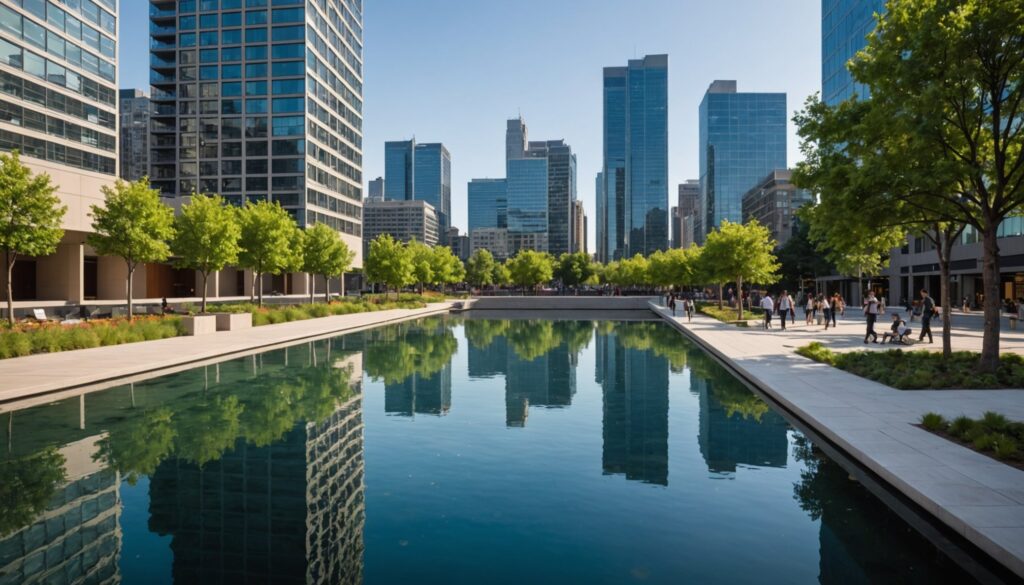
Green Building Solutions Explained: A Guide for Homeowners
The concept of green building solutions is becoming increasingly popular among homeowners and construction experts. As the world seeks to adopt more environmentally friendly practices, understanding how to implement these solutions is essential. This article will delve into green building solutions explained, offering insights into how these practices can benefit both your home and the environment.

What are Green Building Solutions?
Green building solutions refer to construction methods that aim to reduce the environmental impact of buildings. These solutions incorporate sustainable materials, energy-efficient designs, and innovative technologies to create homes that are both eco-friendly and cost-effective. By integrating green building techniques, homeowners can enjoy reduced energy costs, improved air quality, and a smaller carbon footprint.
Benefits of Green Building Solutions
Environmental Benefits
One of the most significant advantages of green building is its positive impact on the environment. By utilizing sustainable materials and energy-efficient systems, these solutions reduce waste and conserve natural resources. This approach not only helps protect the planet but also promotes a healthier lifestyle for residents.
Economic Benefits
While the initial investment in green building may be higher, the long-term savings are considerable. Energy-efficient systems and sustainable materials lead to lower utility bills and maintenance costs. Additionally, green homes often have a higher resale value, making them a smart financial investment.
Key Components of Green Building Solutions
Sustainable Materials
Using sustainable materials is a cornerstone of green building. These materials are sourced responsibly and have minimal environmental impact. Examples include bamboo, recycled metal, and reclaimed wood. Selecting these materials helps reduce waste and promotes a more sustainable construction process.
Energy Efficiency
Energy efficiency is another critical aspect of green building solutions. Incorporating energy-efficient appliances, lighting, and HVAC systems can significantly reduce energy consumption. Additionally, designing homes to maximize natural light and ventilation further enhances efficiency.
Water Conservation
Water conservation is a vital component of green building. Implementing water-saving fixtures, rainwater harvesting systems, and drought-resistant landscaping can reduce water use and promote sustainability.
How to Implement Green Building Solutions in Your Home
Start with an Energy Audit
Conducting an energy audit is the first step towards implementing green building solutions. This assessment identifies areas where your home can improve energy efficiency and suggests ways to reduce consumption.
Choose Sustainable Materials
When renovating or building, opt for sustainable materials that have a low environmental impact. These materials not only contribute to a healthier environment but also offer durability and aesthetic appeal.
Incorporate Energy-Efficient Technologies
Install energy-efficient appliances, lighting, and HVAC systems to reduce energy use. Additionally, consider incorporating renewable energy sources, such as solar panels, to further enhance sustainability.
Challenges in Adopting Green Building Solutions
While the benefits of green building are clear, there are challenges to consider. The initial cost can be a barrier for some homeowners, and finding skilled professionals with experience in green construction can be difficult. However, as demand for sustainable solutions grows, these challenges are becoming less significant.
Future of Green Building Solutions
The future of green building looks promising. With advancements in technology and increased awareness of environmental issues, green building practices are becoming more accessible and affordable. As more homeowners embrace these solutions, we can expect to see a significant shift towards sustainable living.
Conclusion
Green building solutions explained offer a pathway to a more sustainable and cost-effective future for homeowners. By understanding and implementing these practices, you can contribute to a healthier environment and enjoy the numerous benefits of an eco-friendly home.

FAQs
What are the main benefits of green building?
Green building offers several benefits, including reduced environmental impact, lower energy costs, and improved indoor air quality.
Is green building more expensive?
While the initial cost may be higher, the long-term savings from reduced energy and maintenance costs often outweigh the upfront investment.
How can I start implementing green building solutions in my home?
Begin by conducting an energy audit to identify areas for improvement, then choose sustainable materials and energy-efficient technologies for renovations or new construction.
For more information on innovative and affordable housing designs, visit this page. You can also learn about the sharing economy in housing here. Additionally, explore resilient and regenerative sustainable urban housing solutions in Nigeria here.
This article contains affiliate links. We may earn a commission at no extra cost to you.